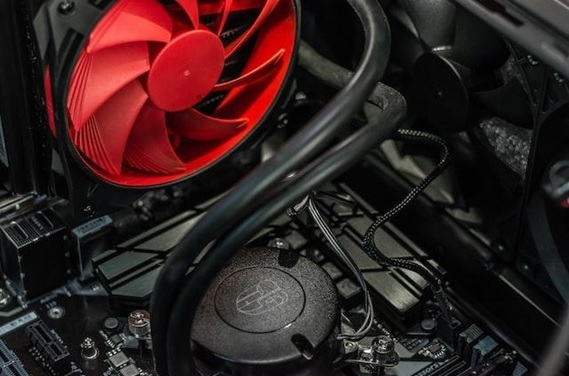As 3D printing continues to gain popularity, it is essential to look for the best 3D printer resin to guarantee the best results. However, there are so many options for you, which makes the selection process quite challenging.
In addition, you’ll also need to select a 3D resin printer. Remember, the goal is to print the best 3D model most economically. It, therefore, means your selection will have a significant impact on overall printing results.
Luckily, we’ve prepared this article to help you know which 3D printer resin will give you the best results. Keep reading it to get more information on 3D resins.
What is 3D Printing Resin?
3D printing resin is a photosensitive liquid that solidifies when exposed to a particular type of light. In other words, 3D printing resins are photopolymers. These resins can be put into two main categories;
- LCD 3D resin printer
- DLP 3D resin printer
LCD 3D Resin Printer
LCD 3D printers print 3D models by exposing them to UV rays. This 3D printer uses a display module to project UV rays in a specific light pattern. The 3D printer resin solidifies in that pattern to form your desired 3D model.
It’s essential to note that LCD 3D resin printers are popular among professionals and enthusiasts. The primary reason behind its popularity is:
- This type of 3D resin printer is ideal for printing large 3D models
- It is economical
DLP 3D Resin Printer
Similar to LCD 3D resin printers, DLP also prints 3D models by exposing them to light using a digital projector. DLP resin printers are more expensive compared to LCD 3D resin printers because of the following reasons:
- DLP 3D resin printers offer a faster and more accurate print because they produce an intense light
- DLP 3D resin printers are ideal for printing small 3D models.
Note: When shopping for 3D printing resins, it would be best to specify your printer type. Doing so will help you avoid buying a 3D resin incompatible with your 3D printer.
Also, it would be best to use support material for printing 3D models with complex geometries. We strongly recommend removing the support material before curing – uncured 3D printing resin is softer than cured resin. Removing after curing will leave marks on your 3D model.
What are the Most Popular 3D Resins?
Check out some of the most popular 3D resins which guarantee you the best results:
Standard Resin
The standard resin is a popular choice for many 3D professionals and enthusiasts because it is the starting point of all 3D resins. This type of resin is ideal for use on both types of resin 3D printers.
Standard resin has exceptional features which make it versatile. This resin can be referred to as the starting point of other resins. Standard resin is ideal for printing visual models.
The standard resin is available in different colors. A wide range of colors is highly beneficial in printing visual models like figurines, electrical components, etc. It will help you print aesthetic models. Beyond printing aesthetic models, you can color-code your 3D models.
Another reason why the standard resin is ideal for giving you the exact results you need is its stability. 3D models printed using this 3D resin do not shrink. This resin also cures quickly when exposed to your LCD 3D Printer’s UV light.
Unfortunately, you cannot use this 3D resin to print functional prototypes. Standard resin is a bit limited with regard to its functionality. It is extremely brittle despite having exceptional tensile strength.
ABS-like Resin
ABS-like resin is another popular choice for professionals and enthusiasts who use LCD 3D printers. It is popular because it mimics the mechanical properties of ABS 3D printing filament used mainly in FDM 3D printers.
Unlike Standard resin, ABS-like resin can be used to print functional prototypes. Its mechanical properties, e.g., tensile strength, impact & abrasion resistance, high-stress tolerance, etc., make it ideal for printing functional prototypes.
In addition to being robust, ABS-like resin paired with the correct printer settings will produce uniform and smooth surfaces. The best part is that this 3D printing resin is economical and affordable with all its excellent features.
ABS-like resin has one key downside – it is unsuitable for outdoor use. Exposing 3D models printed with this model to the sun will damage them.
Castable 3D Resin
Castable 3D resin is mainly used with DLP 3D printers. This resin type is primarily used to make 3D models for the dentistry and jewelry industries. It is essential to note that castable resins for 3D printing are significantly expensive.
Most 3D models made from castable 3D resin will certainly require post-processing. It would be best to ensure that you understand the chemical composition of your castable 3D resin. It will help you know the best post-processing method that is most convenient.
Here’s a perfect example:
Castable resins have some amount of wax. It would be best to know the percentage of wax as it will help you to know the best post-processing method. Suppose the resin has high percentages of wax. In that case, the most effective and efficient post-processing method is using wax carving tools.
The primary reason why castable 3D resins are popular is that they offer an economical way of producing small high-resolution 3D models. They additionally print 3D models without producing strong odors.
One downside to castable resin is its price – it is quite expensive compared to other resins.
Honorable Mention: Dental 3D Printing Resin
Dental 3D printing resin is, yet again, another popular resin 3D printing photopolymer. It is mainly used in dental labs to develop custom oral cavities for patients. The best part about using this 3D printing resin is its versatility.
It additionally does not produce strong odors during printing.
Beyond printing custom oral cavities, you can also use it to print surgical guides. It has excellent dimensional accuracy with low failure rates. Unlike other 3D resins, dental resin is biocompatible.
One main downside to using this dental 3D printing resin is how it can easily stain. The resin easily stains, especially If a patient drinks coffee or red wine frequently.
Warning: While most 3D resins do not produce strong odors during printing, inhaling the fumes might harm your health. Health experts suggest that long-term exposure to these fumes may increase the chances of cancer.
Consider doing all your 3D printing activities in a well-ventilated environment.
Wrap-up on 3D Printing Resin
3D printer resins produce more detailed 3D models than other popular printing methods, e.g., FDM 3D printing. Choosing a 3D printer resin that gives you the best results primarily depends on how you intend to use it.
This article has provided an in-depth analysis of the most popular 3D printing resins. Following its recommendations, warnings, and notifications will help you achieve the best 3D printing results.








